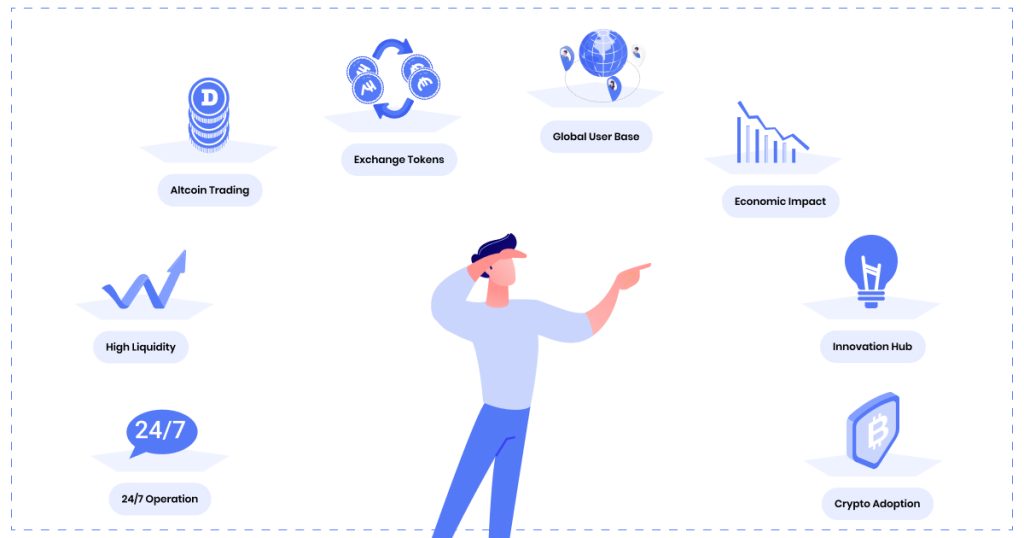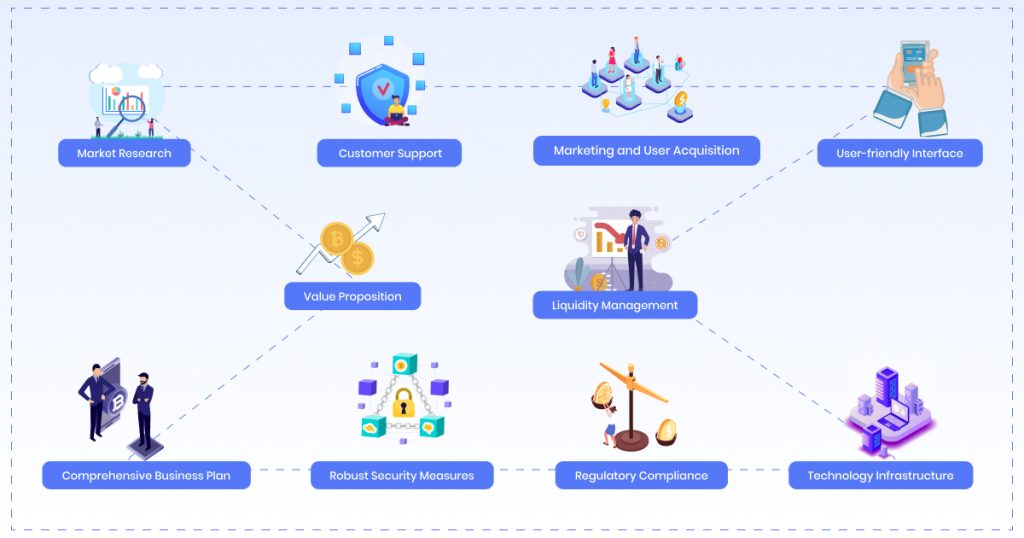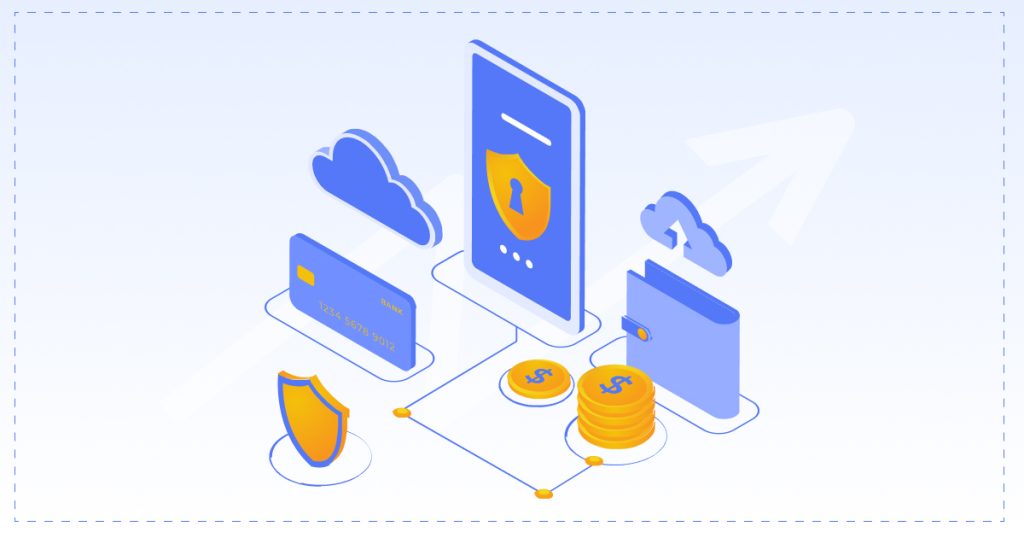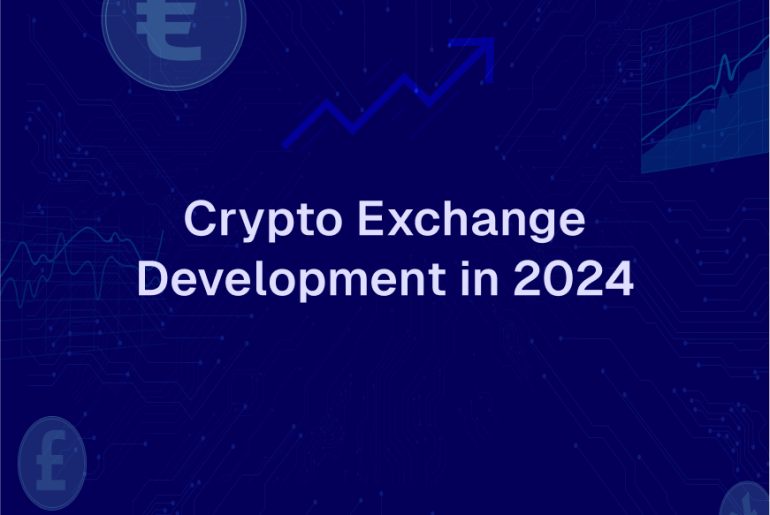The emergence of cryptocurrencies and blockchain technology has inspired innovations like crypto exchanges that have shaped the future of the finance industry, especially for individuals around the globe who deal with cryptocurrencies. These exchanges leverage blockchain technology to provide transparent and immutable transaction records. Building a robust and secure crypto exchange has become an exciting and challenging venture. This is where a cryptocurrency exchange development company steps in.
In this interesting article, we will guide you through the essential steps and best practices to create a successful cryptocurrency exchange that stands the test of time in this highly competitive industry. We will also share with you some interesting insights into the dynamic and exciting world of cryptocurrency exchanges. You will get valuable information regarding the attributes of a trustworthy cryptocurrency exchange development company that can cover everything in the right way for you if you want a cryptocurrency exchange.
- Based on what the White House news release had to say, the production of crypto assets consumes somewhere between 120 and 240 billion kWH of electricity on an annual basis.
- India comprises approximately 93 million crypto users, followed by the U.S., which accounts for around 48 million crypto users.
Things to know before you start Crypto Exchange Development

Here are some cool facts regarding cryptocurrency exchanges:
- 1. 24/7 Operation: Unlike traditional stock exchanges that have opening and closing hours, cryptocurrency exchanges operate 24 hours a day, seven days a week.
- 2. Altcoin Trading: Some of the largest cryptocurrency exchanges handle billions of dollars in trading volume daily, providing high liquidity for traders. This liquidity is essential for executing large orders without significantly affecting market prices.
- 3. High Liquidity: Many exchanges offer a wide variety of altcoins (alternative cryptocurrencies) for trading. This has led to the growth of the altcoin market, with new projects launching frequently.
- 4. Exchange Tokens: Some exchanges issue their native tokens (e.g., Binance Coin, FTX Token). These tokens can be used for trading fee discounts and other benefits within the exchange ecosystem.
- 5. Global User Base: Cryptocurrency exchanges serve a global user base, making it possible for people from different countries to trade and invest in digital assets.
- 6. Economic Impact: The cryptocurrency market has grown into a significant economic force, with its total market capitalization surpassing trillions of dollars. It has attracted the attention of institutional investors and governments.
- 7. Innovation Hubs: Cryptocurrency exchanges often serve as hubs for innovation, with many supporting the launch of new blockchain projects through token listings and initial exchange offerings (IEOs).
- 8. Crypto Adoption: Cryptocurrency exchanges play a crucial role in promoting cryptocurrency adoption by providing on-ramps and off-ramps for users to enter and exit the crypto ecosystem.
Types of Crypto Exchange Platforms

There are several types of cryptocurrency exchange platforms, each with its own unique features and characteristics. Here are the main types of crypto exchange platforms:
- Centralized Exchanges (CEX): These are the most common type of cryptocurrency exchange. They operate as intermediaries, holding users’ funds and facilitating the trading of cryptocurrencies. Centralized exchanges have control over the order book, matching buy and sell orders internally. Users trust the exchange to securely store their funds and execute trades. Examples of Centralized exchanges encompass the likes of Coinbase, Binance and Kraken.
- Decentralized Exchanges (DEX): Decentralized exchanges allow users to trade cryptocurrencies directly on the blockchain without the need for a central intermediary. They are completely autonomous. DEXs use smart contracts to automate and facilitate trades, eliminating the need to trust a centralized authority.
- Hybrid Exchanges: These exchanges as their name implies amalgamate typical properties of both centralized and decentralized exchanges. They may utilize centralized order books while allowing users to retain control of their funds until the execution of trades.
- Peer-to-Peer Exchanges (P2P): Peer-to-peer exchanges connect individual buyers and sellers directly, allowing them to trade cryptocurrencies without an intermediary. P2P exchanges facilitate transactions through pre-arranged agreements or by using an escrow service to ensure the secure transfer of funds and cryptocurrencies. Examples of P2P exchanges include LocalBitcoins and Paxful.
- Brokerage Exchanges: Brokerage exchanges act as intermediaries between users and third-party liquidity providers, offering a simple and user-friendly interface for buying and selling cryptocurrencies.
- Derivatives Exchanges: Derivatives exchanges specialize in trading cryptocurrency derivatives, such as futures contracts, options, and leveraged products. These exchanges allow users to speculate on the price movements of cryptocurrencies without owning the underlying assets.
How to build a cryptocurrency exchange like Binance in 2025

Building a cryptocurrency exchange like Binance is a complex and challenging endeavor.
Here are some guidelines to consider when dealing with cryptocurrency exchange development to get a platform similar to Binance.
- In-Depth Market Research: Conduct in-depth market research to understand the dynamics of the cryptocurrency exchange industry, identify gaps, and assess the competitive landscape. Analyze Binance’s features, user experience, and market positioning to identify areas where you can differentiate your exchange.
- Formulating a Comprehensive Business Plan: Develop a comprehensive business plan, outlining your exchange’s goals, strategies, revenue streams, marketing plans, and financial projections. Pay importance to details regarding compliance, security measures, liquidity management, and user acquisition strategies.
- Regulatory Compliance: Understand and comply with the regulatory frameworks in the jurisdictions where you plan to operate. Develop effective KYC/AML procedures to ensure compliance with Know Your Customer and Anti-Money Laundering regulations. Establish relationships with legal advisors to navigate the complex regulatory landscape.
- Technology Infrastructure: Develop a scalable technology infrastructure capable of handling high trading volumes and providing a seamless user experience. Consider using reliable and proven blockchain frameworks like Ethereum or building your own blockchain infrastructure. Implement order matching algorithms, trading engines, API integrations, and data management systems.
- Liquidity Management: Establish partnerships with liquidity providers, market makers, or other crypto exchanges to ensure sufficient liquidity on your platform. Explore strategies like incentivizing market makers and implementing liquidity aggregation mechanisms to enhance trading opportunities for users.
- User-friendly Interface and Trading Tools: Design a user-friendly and intuitive interface that caters to both experienced traders and newcomers. Provide advanced trading tools, comprehensive charting, order types, price analytics, and trading APIs to enhance the trading experience.
- Marketing and User Acquisition: Develop a comprehensive marketing strategy to create awareness and attract users to your exchange. Utilize various channels, like social media, content marketing, events, partnerships, and referral programs, to build a strong user base. Differentiate your marketing approach to resonate with your target market.
Collaborating with a development team skilled in cryptocurrency exchange development services along with blockchain consultants who have experience in cryptocurrency exchange development can greatly increase your chances of success in building a crypto exchange that is similar in power and robustness to Binance.
Architecture of a Cryptocurrency Exchange Software

Speaking of the specific architecture of a cryptocurrency exchange, it may vary depending on factors such as the exchange type (centralized or decentralized), target market, trading features, security requirements, and regulatory compliance obligations.
Below are some of the key components of cryptocurrency exchange software.
- Front-end: The front-end of a cryptocurrency exchange is the user interface that allows traders to interact with the platform. It includes features such as login and registration, account management, trading charts, order placement, transaction history, and withdrawal and deposit requests.
- Trading Engine: The trading engine is the core component of the exchange responsible for matching buy and sell orders. It executes trades based on predefined rules, including price, quantity, and time priority. The trading engine must be highly efficient and scalable to handle high trading volumes and fluctuating market demands.
- Order Book: The order book stores and organizes all buy and sell orders submitted by users. It displays the current bids and asks, enabling traders to see the available liquidity and make informed trading decisions.
- Wallets: Wallets are used to securely store users’ cryptocurrency balances. Each user has their own wallet associated with their account, which keeps track of their deposits, withdrawals, and available balances. Wallets should have robust security measures, including encryption and multi-signature functionality, to protect user funds.
- KYC/AML and Security: This vital aspect is necessary for verifying the identity of users through Know Your Customer procedures and for enforcing anti-money laundering regulations. It includes user onboarding processes, identity verification, and compliance checks. Additionally, it ensures the security of the exchange infrastructure by implementing measures such as encryption, firewalls, intrusion detection systems, and penetration testing.
- Payment Gateways: Payment gateways handle the integration of traditional fiat payment methods (such as credit cards or bank transfers) into the exchange platform. They facilitate the conversion of fiat currencies to cryptocurrencies and vice versa.
- APIs: Application Programming Interfaces enable third-party developers to integrate their applications or trading bots with the exchange. APIs provide functionality such as market data, trading execution, account management, and other services.
- Analytics and Reporting: Here the exchange collects and analyzes data related to trading activities, volumes, user behavior, and other metrics. Analytics and reporting tools help monitor the exchange’s performance, identify trends and patterns, and generate reports for regulatory compliance or business decision-making purposes.
- Back-office Operations: This includes administrative features such as user support and customer relationship management, financial management, compliance monitoring, risk management, and audit processes. It ensures the smooth operation and regulatory compliance of the exchange platform.
- Blockchain Integration: Some exchanges integrate with blockchain networks to enable direct trading of cryptocurrencies on the blockchain, rather than using a centralized order book. This allows for decentralized trading and may involve implementing smart contracts or utilizing decentralized exchange protocols.
When seeking out a cryptocurrency exchange development company to get your crypto exchange developed properly, make sure that they cover all these essential aspects when building it.
How To Develop A Crypto Payment Gateway In 2025?

Building a highly robust and successful crypto payment gateway to compete with the established giants and other rising competitors in this market requires a strong technical foundation, adherence to security standards, a deep understanding of user needs, and proactive adaptation to industry trends.
To develop a successful crypto payment gateway in 2025, here are some key steps to follow:
Conduct market research and identify target users.
- 1. Understand the current market trends and dynamics of the crypto payment gateway industry.
- 2. Identify your target users, such as businesses, e-commerce platforms, or individuals, and their specific needs and pain points.
- 3. Analyze your potential competitors and identify gaps in the market to differentiate your payment gateway.
Choose the right blockchain technology:
- 1. Select a suitable blockchain technology that aligns with your business goals and target market.
- 2. Consider factors such as scalability, security, transaction speed, developer community support, and compatibility with popular cryptocurrencies.
- 3. Evaluate existing blockchain platforms like Ethereum, Stellar, or Ripple, or opt for developing your own blockchain solution.
Develop user-friendly interfaces and tools
- 1. Design intuitive and user-friendly interfaces for merchants and customers to easily integrate and use the payment gateway.
- 2. Offer software development kits (SDKs), plugins, and APIs that provide seamless integration with e-commerce platforms and other systems.
- 3. Provide tools to monitor transactions, generate reports, and track payment histories for merchants.
Establish liquidity partnerships:
- 1. Collaborate with liquidity providers, exchanges, or payment processors to ensure seamless conversion of cryptocurrencies into fiat or other desired assets.
- 2. Strive for competitive exchange rates and low transaction fees.
Provide Stellar Customer Support:
- 1. Offer responsive and efficient customer support through multiple channels like chat, email, or phone.
- 2. Resolve queries and issues promptly to build trust and maintain positive user experiences.
Implement effective marketing strategies:
- 1. Develop a comprehensive marketing strategy to create awareness and promote your payment gateway.
- 2. Utilize channels like social media, content marketing, influencer partnerships, and targeted advertising to reach your target audience.
Cost of Cryptocurrency Exchange Software Development

Cost in getting cryptocurrency exchange software development done depends on several factors, including the scope of the project, desired features, complexity, security measures, and the development team’s rates.
Here is a detailed breakdown of the major cost parameters involved in developing cryptocurrency exchange software:
- Development Team: The cost of hiring a cryptocurrency exchange development company is extremely integral to the overall cost of development. It can include programmers, UI/UX designers, backend developers, testers, and project managers. The development team’s rates will vary based on their expertise and geographical location.
- Platform Development: The cryptocurrency exchange development process itself, including the front-end user interface, trading engine, order book, wallets, KYC/AML procedures, and back-office operations, is a major cost component. The complexity and functionality of the desired features will impact the development efforts and costs.
- Security: Implementing robust security measures during cryptocurrency exchange development is crucial for the success and trustworthiness of the exchange. This may include encryption, two-factor authentication, cold storage for user funds, intrusion detection systems, regular security audits, and compliance with industry security standards.
- Regulatory Compliance: Depending on the jurisdictions the exchange will operate in, there may be compliance requirements, such as obtaining licenses, conducting KYC/AML checks, and implementing measures to comply with local regulations.
- Infrastructure: Hosting and server costs are essential for the smooth operation of the exchange. The cost will depend on additional factors such as the expected trading volume, the number of users, and the need for high availability and scalability. Additionally, backup and disaster recovery solutions are needed to ensure uninterrupted services.
- Payment Gateways: Integrating payment gateways for fiat currency transactions involves costs, as there may be fees associated with payment processing services or partnerships with financial institutions. The complexity and number of payment options will influence the cost.
- User Support: Setting up a customer support system, including personnel, ticketing systems, chat support, and helpdesk tools, is essential for addressing user inquiries and ensuring a positive user experience. Costs will vary based on the level of support and the size of the user base.
- Ongoing Maintenance and Upgrades: Once the crypto exchange is launched, ongoing maintenance, bug fixes, software upgrades, and security updates will be necessary. This can involve recurring costs for development and infrastructure support.
Building a fully functional and secure cryptocurrency exchange can start with hundreds of thousands of dollars. It’s advised to consult with an experienced Cryptocurrency Exchange Development Company to get precise cost estimates based on the custom requirements of your exchange project.
Advanced Features of a Crypto Exchange
Advanced and more exciting features of a cryptocurrency exchange go beyond the basic functionality and offer innovative capabilities to enhance the trading experience. Here are some highly advanced features that can be implemented in a crypto exchange:
- Decentralized Exchange (DEX) Integration: A DEX allows users to trade cryptocurrencies directly on the blockchain, eliminating the need for a centralized intermediary. It provides enhanced security, privacy, and control for traders.
- Margin Trading: Margin trading enables users to trade with borrowed funds, increasing potential profits or losses. Advanced margin trading features include adjustable leverage, stop-loss orders, and automatic position liquidation.
- Decentralized Exchange (DEX) Integration: Offering derivatives trading allows users to speculate on the price movements of cryptocurrencies without physically owning them. This can include futures contracts, options, or other derivative instruments.
- Advanced Trading Orders: Implementing advanced order types like stop-limit orders, trailing stop orders, iceberg orders, and fill-or-kill orders provides more sophisticated trading strategies and risk management options for users.
- Advanced Charting and Technical Analysis: Providing powerful charting tools and technical analysis indicators enables traders to analyze market trends and make informed trading decisions. Customizable chart timeframes, multiple chart layouts, and drawing tools are some advanced features to consider.
- Automated Trading with APIs: Enabling API integration allows users to connect their trading bots or algorithmic trading platforms directly to the exchange for automated trading. APIs should offer robust functionality for market data retrieval, order placement, and account management.
- Token Launchpad and ICO Support: Incorporating a token launchpad allows new projects to conduct initial coin offerings (ICOs) directly on the exchange platform. This streamlines the token sale process and provides a trusted venue for investors.
- Cold Storage and Hardware Wallet Integration: Implementing robust security features like cold storage for user funds and integration with hardware wallets enhances the exchange’s security posture and instills more user trust.
Note that implementing advanced features requires careful consideration of security, scalability, and regulatory compliance. It is advisable to consult with a very exceptional cryptocurrency exchange development company and legal experts to ensure a well-designed, compliant, and secure implementation.
How to Create a Crypto Wallet in 2025

To ensure the development of a high-quality crypto wallet this year that meets user needs, prioritizes security, and delivers a seamless user experience, consider the following valuable insights:.
- Clearly Define Requirements: Clearly define your requirements and expectations for the cryptocurrency wallet. Consider factors like supported cryptocurrencies, security features, user interface, compatibility with different devices, and integration with other services or platforms.
- Choose the right development team: Select an experienced and reliable development team with expertise in cryptocurrency exchange development services. Evaluate their portfolio, reputation, and experience in delivering similar projects. Consider collaborating with specialists in cryptography and security to ensure the highest level of protection for user funds.
- ntuitive User Interface: Design a user-friendly and intuitive interface that simplifies the wallet’s functionality and enhances the user experience. During Cryptocurrency Exchange Development, focus on seamless navigation and accessibility across different platforms and devices. Mandatorily conduct UAT during any cryptocurrency exchange software development, as this ensures that your target users find your platform easy to use.
- Multi-platform Support: Consider developing the crypto wallet for multiple platforms, including desktops, mobile devices (iOS and Android), and web browsers. This allows users to access the wallet on their preferred devices and enhances the reach and usability of your wallet.
- Multi-currency Support: If you aim to support multiple cryptocurrencies and tokens, ensure that your wallet is compatible with a wide range of digital assets. Implement the necessary infrastructure to enable users to securely store, send, and receive different types of cryptocurrencies with the help of the same wallet.
- Regular Updates and Maintenance: Plan for regular updates and maintenance to address potential vulnerabilities or bugs, add new features, and keep the wallet up to date with the evolving cryptocurrency landscape. Promptly address security patches, compatibility issues, and user feedback to maintain a secure and reliable wallet.
- Compliance with Regulatory Requirements: Stay informed about the regulatory requirements in the regions where you plan to operate. Ensure that your wallet complies with applicable regulations, such as KYC/AML or data privacy laws, to foster trust among users and avoid potential legal complications.
A pro tip to ensure a good future for the exchange through the cryptocurrency exchange software development work is to regularly monitor industry trends and updates to remain adaptable and responsive to the evolving cryptocurrency landscape. Look out for a cryptocurrency exchange development company that carefully takes all the above parameters into account.
Pitfalls to Avoid During Crypto Exchange Development
When getting cryptocurrency exchange development services done, it is crucial to be mindful of potential challenges to ensure a successful and secure platform. Here are some of the major pitfalls to avoid:
- Lack of Security: Insufficient security measures can make the exchange vulnerable to cyber attacks and hacking incidents. It is imperative to implement robust security protocols, encryption standards, two-factor authentication, and regular security audits to protect user funds and information.
- Inadequate Regulatory Compliance: Failure to comply with regulatory requirements can lead to legal complications and damage the reputation of your cryptocurrency exchange. It is crucial to understand the applicable laws and regulations related to cryptocurrencies and financial services in the target jurisdictions and implement appropriate compliance procedures.
- Poor User Experience: A confusing user interface can deter users from using the exchange. It is essential to prioritize usability and provide a user-friendly interface that is easy to navigate and understand. User testing and feedback can help identify and address any usability issues. The user experience is ensured when cryptocurrency exchange development services are done well enough with attention to detail.
- Inadequate Testing and Bug Fixes: Skipping thorough testing and bug fixing stages can result in a platform plagued with performance issues, bugs, and vulnerabilities. Comprehensive testing, including functional testing, security testing, and load testing, should be conducted to identify and address any issues before the launch.
- Poor Scalability: Failing to anticipate the growth of the user base and trading volumes can lead to performance issues and system downtime. It is crucial to design the exchange with scalability in mind, ensuring that the infrastructure can handle increased usage and trading activity.
- Lack of Customer Support: Inadequate customer support can hamper user satisfaction and trust in the exchange. It is important to provide responsive and efficient customer support channels, including live chat, email, and ticketing systems, to address user inquiries and issues promptly.
- Insufficient KYC/AML Procedures: Neglecting proper Know Your Customer (KYC) and Anti-Money Laundering (AML) procedures can pose legal and compliance risks. Implement thorough identity verification processes, transaction monitoring, and reporting mechanisms to meet regulatory requirements and prevent illicit activities on the platform.
- Ignoring Industry Best Practices: Failing to adhere to industry best practices in terms of security, infrastructure, trading features, and compliance can result in a subpar exchange. It is important to stay updated with the latest trends, technologies, and regulatory developments in the cryptocurrency industry to build a competitive and compliant platform.
- Lack of Transparency: Transparency is crucial to gaining user trust in the crypto exchange. Providing clear and transparent fee structures, terms of service, privacy policies, and regular communication with users can foster transparency and credibility.
By avoiding these pitfalls and investing in proper planning, thorough development, testing, and compliance measures, you can increase the chances of ensuring an effective and robust cryptocurrency exchange development done for you. The best measure to avoid headaches and ensure a smooth flow in getting the crypto exchange ready is to put trust in a top-rated cryptocurrency exchange development company after extensive research.

Conclusion
When it comes to cryptocurrency exchange platform development in India, Pyramidion Solutions is ready to earn your trust as your reliable partner. With a dynamic team, transparent pricing structures, and a strict adherence to quality, we ensure that your crypto exchange has everything needed to become a thumping success in the market
We will consider everything necessary, from the complexity of your crypto exchange vision to other key factors, to help you navigate everything smoothly and get you a budget-friendly white-label cryptocurrency exchange in no time. For all your needs, Contact Us Today, and we will steer you safely and speedily on a journey of innovation and cost-effective excellence to a destiny called success.
FAQs
1. What is cryptocurrency exchange development?
Cryptocurrency exchange development is all about creating online secure, robust and easy to use digital currency exchanges that are tailored according to a given person’s business requirements.
Cryptocurrency exchange development is all about creating online secure, robust and easy to use digital currency exchanges that are tailored according to a given person’s business requirements.
2. What is the best crypto exchange company?
Some of the best crypto exchanges include Kraken, Coinbase, Gemini, BitMart, Bitstamp and Bisq
3. What is the largest cryptocurrency exchange company?
Binance is the company having the largest cryptocurrency exchange in the world trading digital currencies on a daily basis. It accounted for a trade volume of an enormous 18.22 billion dollars very recently.
4. What is a crypto exchange company?
Crypto exchanges are nothing but digital / virtual platforms that are used to seamlessly trade, buy or sell all types of digital currencies and digital assets. The forecasted revenue of crypto exchanges in 2030 is estimated to be a staggering USD 264.32 billion.

Being the COO of Pyramidion Solutions, I am a passionate thought leader with 10+ years of industry experience in having helped multiple clients from all around the world complete their digital transformation journey.
I aim to ensure that my company is well-equipped to successfully navigate the ever-evolving digital landscape comprising emerging technologies like Data Science, Blockchain, Metaverse, and Web3.







